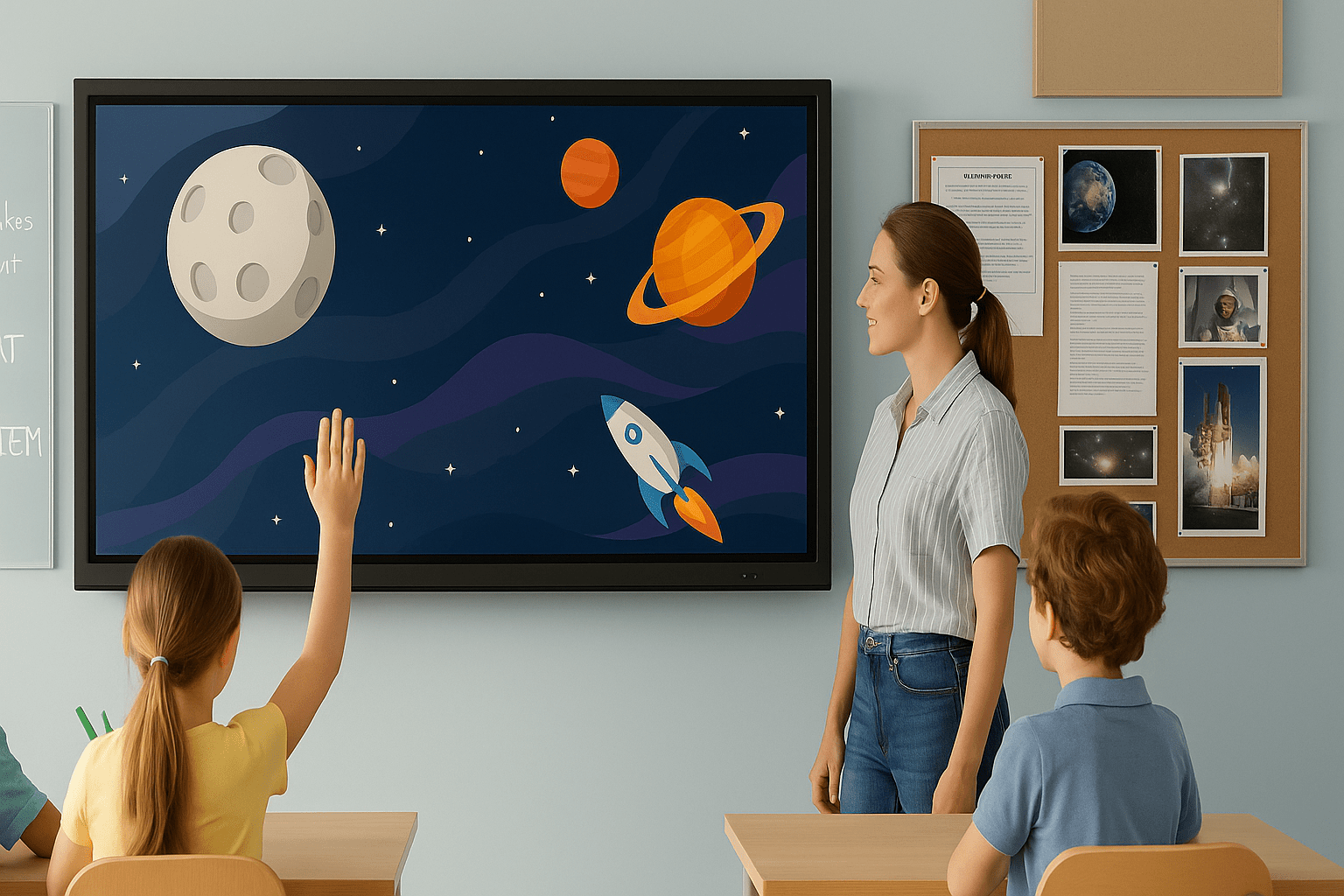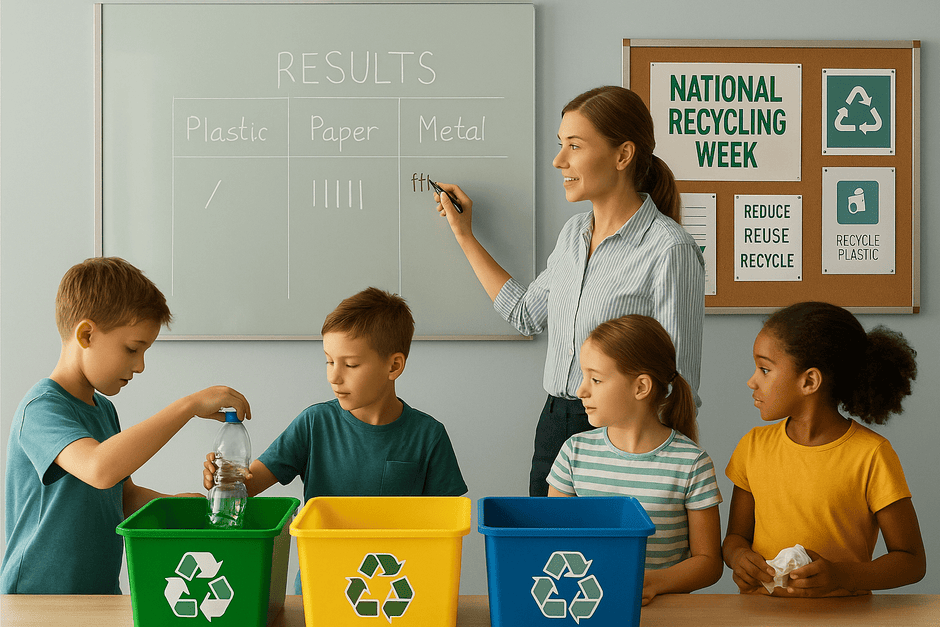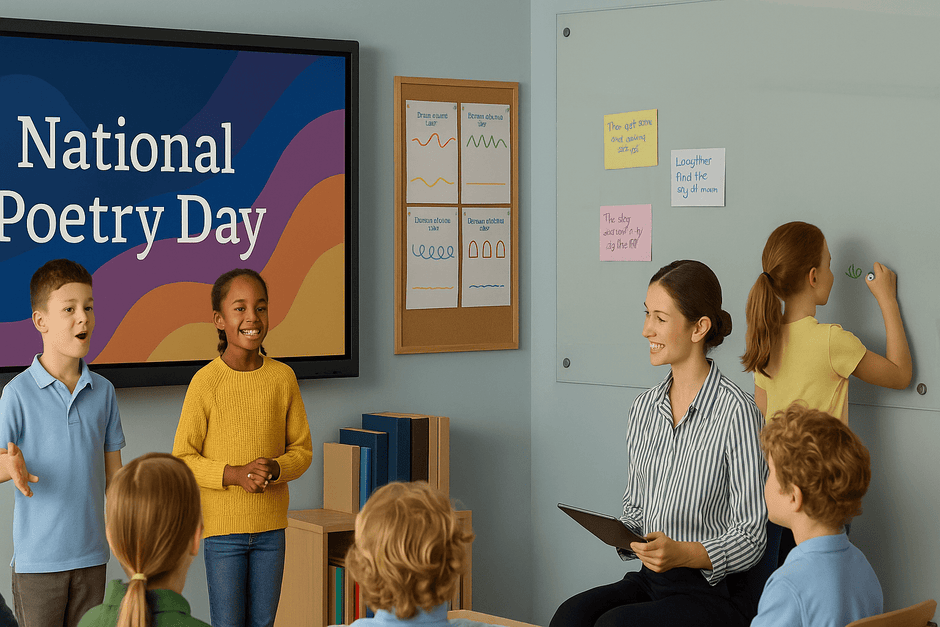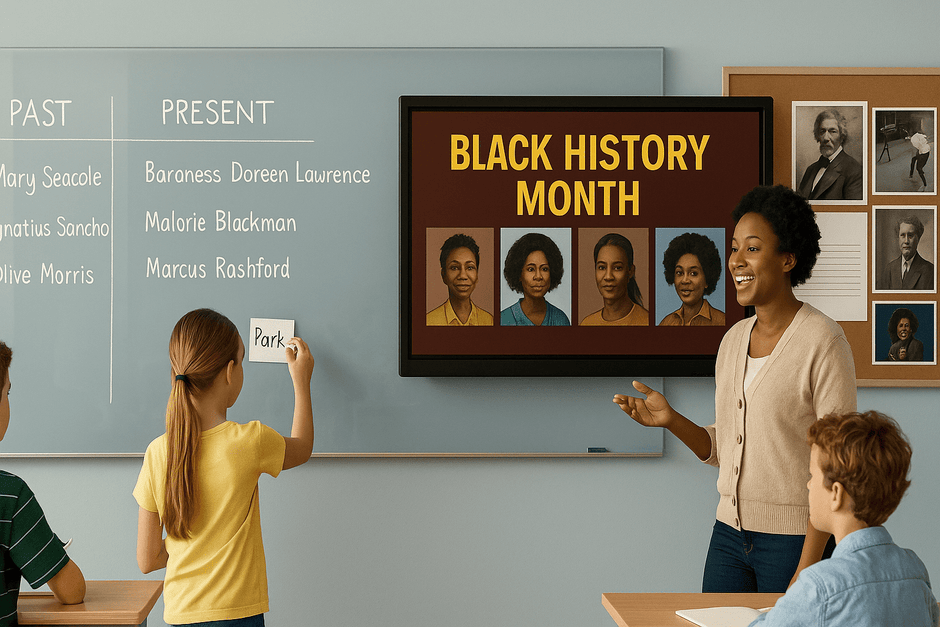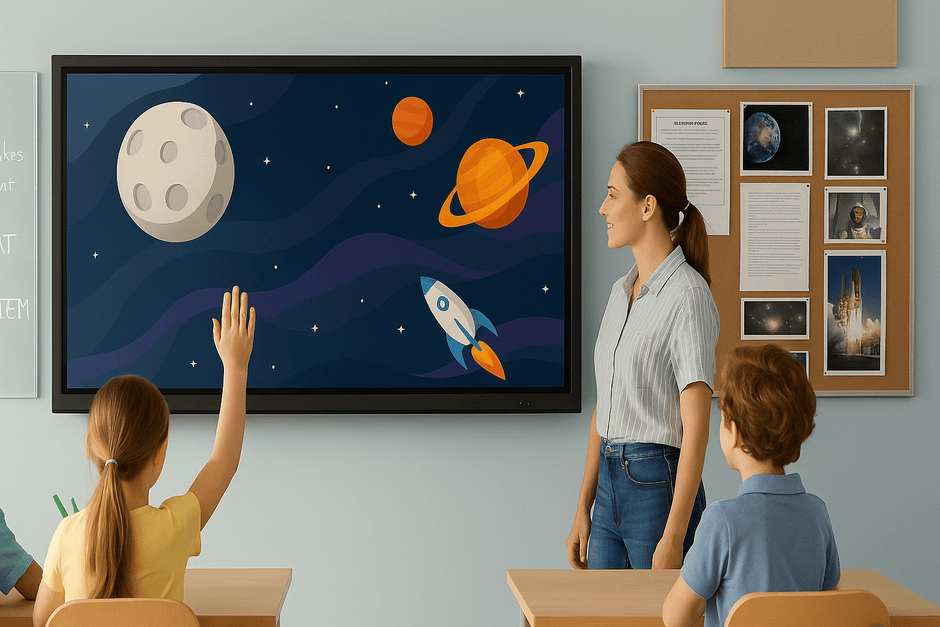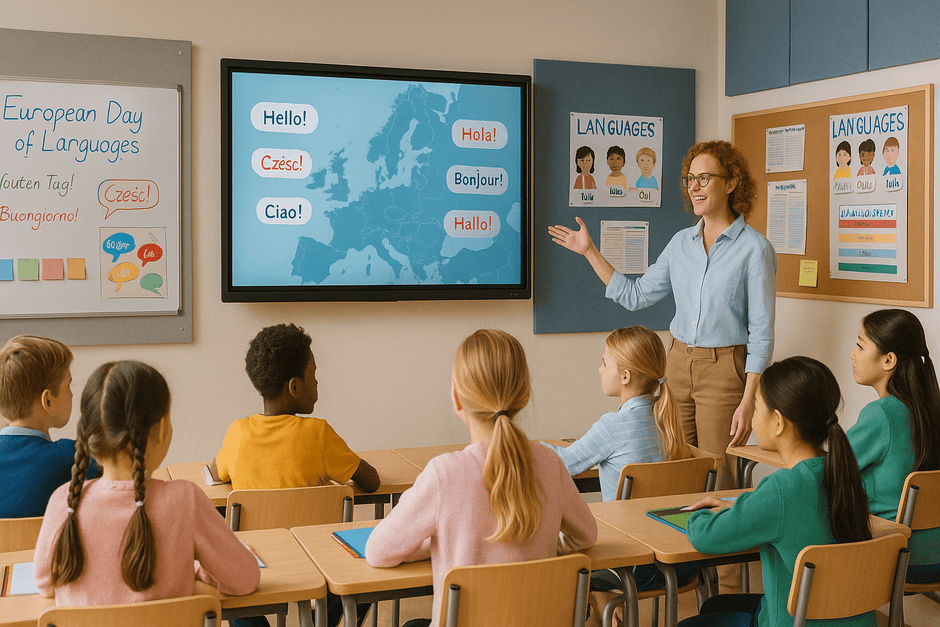World Space Week 2025: A practical guide to planning an out-of-this-world celebration
Dates: 4–10 October 2025 • Theme: Living in Space • Read time: ~12 minutes
World Space Week (WSW) is the UN-declared celebration of space science and technology. This year’s theme — Living in Space — invites schools to explore how humans can live and work beyond Earth. Below you’ll find ideas, what worked well last year, and space-ready environment tips to make activities inclusive and visible.
Why World Space Week matters
WSW is celebrated annually from 4–10 October and connects classrooms to real-world science, technology and engineering. In 2024 the theme was Space & Climate Change, which saw schools focus on satellites, Earth observation and sustainability. In 2025 the theme is Living in Space — a perfect lens for STEM, design, health, ethics and citizenship.
What schools did in 2024 — and what landed well
- Satellite & climate investigations: classes used weather and Earth-observation imagery to discuss climate patterns and human impact.
- Rocket design challenges: paper-rocket launches and egg-drop missions introduced forces, drag and iteration.
- Space news assemblies: quick updates on missions, then pupil Q&A.
- Cross-curricular displays: poetry about the Moon, art inspired by nebulae, and geography links via mapping.
- After-school showcases: families invited to see projects and watch mission clips.
Why these worked: multi-sensory tasks, visible displays and short, hands-on challenges helped every learner find a way in — and gave staff quick wins without heavy resourcing.
Ideas for 2025 you can lift (theme: Living in Space)
- Habitat design studio: pupils sketch a lunar or orbital habitat on a glassboard — power, food, air, water, waste. Older groups add constraints and trade-offs.
- Astronaut health lab: mini-stations on exercise, sleep, nutrition and microgravity. Compare with life on Earth; produce a poster for the crew.
- Mission operations role-play: flight director, communications, science, engineering. Run a timed “anomaly” scenario and practise clear language.
- Rovers & robots unplugged: code a human “rover” using arrows/commands; extend to simple block coding later in the week.
- Space ethics debate: who owns the Moon’s resources? Should we grow food in orbit? Use a projection screen for stimulus clips.
- Living-in-space video postcards: 60-second clips explaining one system (air recycling, radiation shielding, day-night cycles) for a younger year group.
- Family space night: short talks, rocket-making, student demos shown on interactive screens.
Best-practice tips
- Start small, build up: begin with unplugged tasks; layer on tech later in the week.
- Differentiate for inclusion: sentence stems, visuals, paired explanations; offer audio or drawing options for write-ups.
- Make it visible: use corridors and classrooms to publish work daily — plans, prototypes, reflections.
- Link to curriculum: forces, materials, health, persuasive writing, oracy and ethics.
- Capture pupil voice: quick exit tickets − “One thing I learned about living in space…”.
- Plan a follow-on: a half-term space club or a display that stays up into November.
Planning timeline
- 4–6 weeks before: pick focus (habitats, health, robotics); audit spaces and displays; schedule assembly and any guest sessions.
- 2–3 weeks before: prep materials; line up prompt videos; ready display areas; brief pupil ambassadors.
- 1 week before: test media on your interactive or projection screens; set up glassboards for daily challenges.
- During WSW: launch with assembly; run short daily challenges; photograph and publish progress.
- Afterwards: showcase work for families; capture feedback; choose one ongoing project.
Learning spaces that help
Great space weeks are built on clear modelling, calm acoustics and visible celebration:
- Glassboards for algorithm sketches, habitat plans and reflection walls — low-ghosting and easy to refresh.
- Acoustic panels to reduce reverberation in halls/labs, improving speech clarity for demos and debates − aligning with BB93 good practice.
- Interactive screens for live modelling, mission clips and student presentations.
- Projection screens for assemblies, family nights and end-of-week showcases.
- Display boards for longer-term galleries of prototypes, vocabulary and research.
Relevant products from Presentation Spaces
Explore solutions that make World Space Week visible, inclusive and collaborative:
- Glassboards − ideal for planning habitats, rover routes and mission checklists.
- Acoustic Panels − calmer rooms and clearer speech for STEM demos and debates.
- Display Boards − publish daily progress, vocabulary and research posters.
- Interactive Screens − live simulations, coding, and student showcases.
- Projection Screens − whole-hall assemblies and community showcases.
Sample week plan (4–10 October)
| Day | Morning | Afternoon | Extra |
|---|---|---|---|
| Sat/Sun (optional) | Set up displays and glassboards | Test media on screens | Teaser posts/newsletter |
| Monday | Launch assembly: Living in Space | Habitat design studio | Pupil voice wall: “One question I have…” |
| Tuesday | Astronaut health lab | Rovers & robots unplugged | Family invite for Friday showcase |
| Wednesday | Mission operations role-play | Block-coding extension (optional) | Photo updates to displays |
| Thursday | Space ethics debate | Prototype improvements | Curate end-of-week gallery |
| Friday | Quick challenges + bug-fix hour | Showcase on interactive/projection screens | Vote & reflect: “What we’d change next time” |
Next steps
Pick two high-impact activities, prepare your displays, and plan one follow-up so WSW lasts all term. If you’d like help specifying glassboards, acoustic panels or digital display solutions, we’re here to help.
Talk to us: Contact Presentation Spaces



